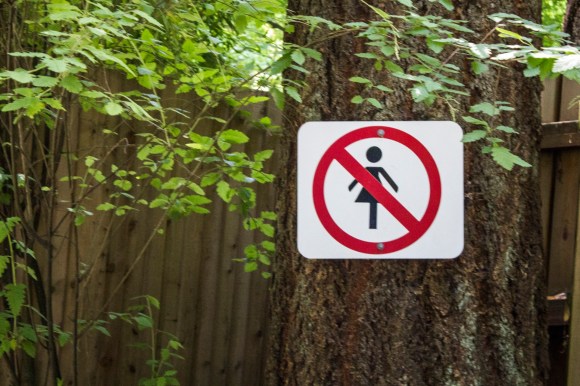
Women have been prohibited from doing certain things (entering places, using facilities, etc.) for as long as civilization has existed. Restrictions are still common, albeit usually in religious contexts only. While religions themselves evolve and change with the times and bans are lifted, it doesn’t mean all of them get an update.
As women, we all know the purported reasons behind these bans: women are “impure” because we menstruate (the same impure biological process that allows us to give life to men), we are the physically weaker sex, and we distract men with our beauty. Yada, yada, yada.
Today, in our Women in Japan Series, we take a look at four things women are still not allowed to do in Japan. I’ve divided them into bans and semi-bans. Bans allow no women; semi-bans allow women–but only sometimes.
Of course, it’s high time these restrictions were lifted. While much headway has been made in the past, such as the lifting of the rule preventing women from climbing Mount Fuji, other bans are proving more stubborn despite protests by Japanese women’s groups. Will these restrictions be lifted anytime soon? Only the Japanese people can decide.
1. Ban: Climbing to the top of Mount Omine
Reason: Women are a “distraction”
If you’ve ever dreamed of climbing Mount Omine in Nara Prefecture (officially known as Mt. Sanjo)–a UNESCO World Heritage Site, and one of the 100 most famous mountains in Japan–we hope you’re not a woman. You might be surprised to learn that UNESCO doesn’t take gender into consideration when awarding World Heritage status, but heritage sites that ban the entire female race can be found in Burma, India, and Greece as well as Japan.
Mt. Omine won World Heritage status as part of a larger category of Sacred Sites and Pilgrimage Routes in the Kii Mountain Range. In fact, the popular Kumano Pilgrimage route goes through the sacred area but makes allowances for women hiking through this part. They are still prohibited, however, from climbing up to Ominesanji Temple at the top of the mountain.
This interdiction is carried over from the old days when, according to Shinto tradition, it was felt that women’s alluring nature would distract male pilgrims from their ascetic duties. Well, perhaps all women were drop-dead gorgeous then, or maybe during those days it was de rigueur for women to hike around naked. But that’s certainly not the case today. Besides, you’d think the real test of a pilgrim seeking religious purity via the strict denial of worldly pleasures, would be to insist that he strictly deny himself worldly pleasures!
▼This sign says: nyonin kekkai (女人結界), or “Women Banned”
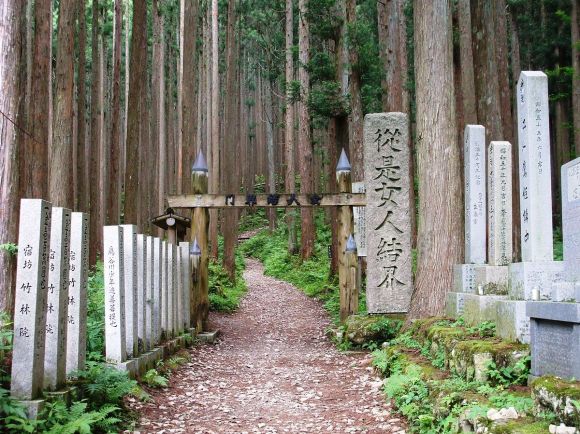
▼Just in case you don’t believe us, here’s a sign straight from the temple, complete with translation especially for foreign enchantresses.
For information on updates to this rule, I made a quick call to Oku Japan, who runs off-the-beaten-track tours to places such as the Kumano Pilgrimage. One of their female guides confirmed the exclusion and said that in recent years they have started taking steps to soften it. She says that while it’s unlikely anyone would try to stop you from entering the mountain path, the local people still take pride in the rule and there may be friction if you enter. She doesn’t recommend pushing the limits.
At any rate, despite the edict seeming inimical to tourism, who are we to decide what local people should allow and not allow within their heritage sites? And one should never disrespectfully trample upon religious traditions. But we can still hope that more softening will take place to the degree of baby softness, and that women will be able to hike up the mountain some day, even while menstruating.
There is one part of the mountain, called Mount Inamura (稲村ヶ岳) that is sometimes referred to as Nyonin Omine (女人大峯), or “Women’s Ōmine,” reserved for ladies. Let’s hope there’s a bar set up there with sake and hors d’oeuvres.
2. Ban: Entering the sumo ring, taking part in sumo competitions and rituals
Reason: women violate the purity of the sumo ring
The Sumo Association claims that since women have traditionally not been allowed to take part in sumo activities through the centuries, that it would be a dishonor to all of their ancestors to change it. Well, that pretty much seals the case since we can’t get permission from the ancestors. Or can we? Why not get in touch with the Itako fortunetellers of Aomori Prefecture, known for their ability to talk with the dead? Surely this is just a formality and all she has to do is run the idea past the sumo ancestors. With the impressive Japanese women in martial arts these days, and the recent ignominy from a decade of scandals, you’d think women would get tacit approval from the ancestors as well. Besides, there have been suggestions that women’s sumo did play a role in some Shinto rituals in the past, so we could clear that up at the same time. Hey, it’s worth a try because as it stands now, women are not allowed to enter the sumo ring even to present prizes to the wrestlers (and yes, women are chosen to give prizes).
And, as with most things that claim women are impure, we’re not that impure since we’re expected to assist our sumo wrestler spouses in their duties, and, should we be married to a stable master, to dedicate our time to helping out those training under him. So there you go: “Behind every successful man is a supportive (impure) woman.”
I might even be fine with excluding women from the sumo ring if the law were a bit more fungible and allowed women to create their own professional league. This is truly long overdue since women’s sumo, called onnazumo, has been around as an amateur sport since the early 18th century. It is now a modern female sport in Japan that includes women of all ages. Yet it is still forbidden from having professional status. And onnazumo is pretty cool, as this video shows:
3. Semi-Ban: Staying in capsule hotels
Reason: Targeted towards businessmen
You may have heard that many of Japan’s capsule hotels are men-only. That’s not true; almost all are men-only. To most people it’s enough to say that the rule doesn’t exist anymore because there are now capsule hotels that allow women. But if a woman just randomly rocks up to a capsule hotel, she’s going to be turned away 99 times out of 100. So it’s more correct to say that women are still not permitted at most capsule hotels.
This budget accommodation, where you stay inside a capsule-like tube, used to be the exclusively for males because such it targeted business men and those who drank until late enough at night to have missed the last train home to the suburbs (the occasional drunk business woman presumably had to either sleep in the gutter or hope she had enough money left over to stay at a higher priced hotel). Some capsule hotels are recognizing that women also work long hours and tend to drink and miss the last train home, and thus have added women’s floors. But not many. Don’t expect to find any that accept females in the countryside. I know–I slept outside once while on the Shikoku Pilgrimage because all the local hotels were full and the one nearby capsule hotel didn’t accept women.
Here are a few female-friendly capsule hotels with English websites: Asahi Plaza in Osaka. Green Plaza in Tokyo and Nine Hours which has long been one of our favorites and has two locations: Narita Airport and Kyoto. Outside of the big cities? Fuggetaboutit!
4. Semi-Ban: Becoming sushi chefs
Reason: Women’s hands are too warm, so could ruin the flavor of the sushi.
This subject has been discussed in much detail in several English media outlets, and it was declared an urban myth by National Public Radio in the U.S.. But the fact remains that many Japanese people still believe women shouldn’t be sushi chefs. And while men are happy to have their wives make sushi at home, the denizens of the kitchen are rarely seen preparing it at restaurants, considered to be the domain of male chefs.
Jiro Ono, owner of the Michelin 3-star restaurant Sukiyabashi Jiro, has a son who told Speakeasy (the Wall Street Journal blog) that women shouldn’t become sushi chefs because they menstruate. In the interview he said, “To be a professional means to have a steady taste in your food, but because of the menstrual cycle women have an imbalance in their taste, and that’s why women can’t be sushi chefs.” He didn’t elaborate on their chances of becoming sushi chefs after menopause.
Of course this is just pabulum to appease the restaurant elites. We know the truth–put a beautiful woman behind the sushi bar and you’ll sell a lot more sushi!
Well, with all the ballyhoo about menstruation and impurity, it’s a wonder women can succeed in anything at all. Yet we do, all by our little menstrual selves. Now, if you’ll excuse me, I’ve got a busy schedule today distracting ascetics and pandering my feminine charm to any male passerby–it’s all in a typical day of a pre-menopausal woman!
Feature Image: Flickr (Quinn Dombrowsky)

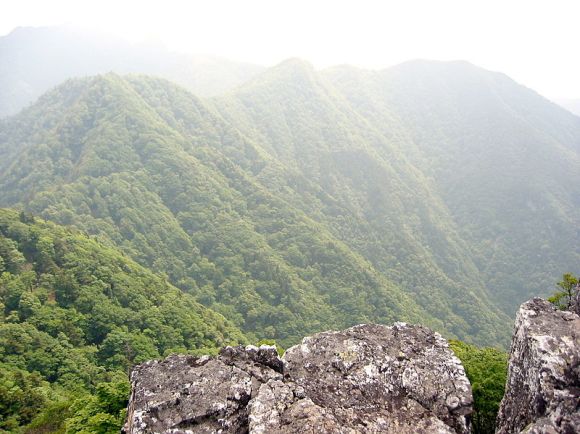
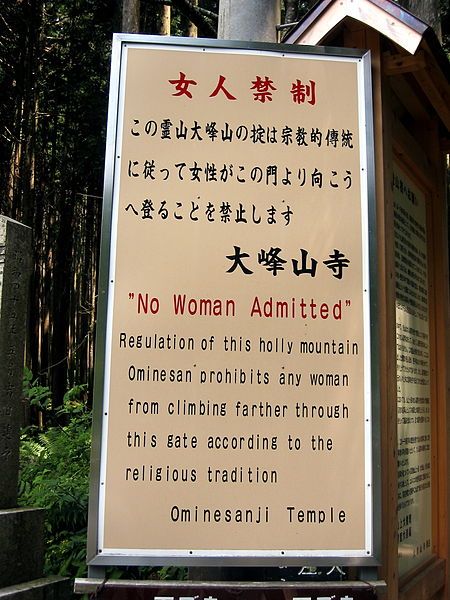
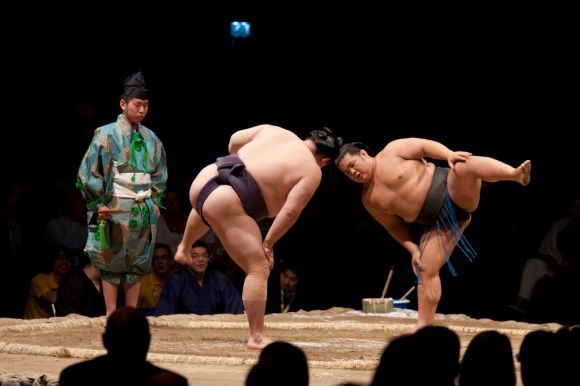
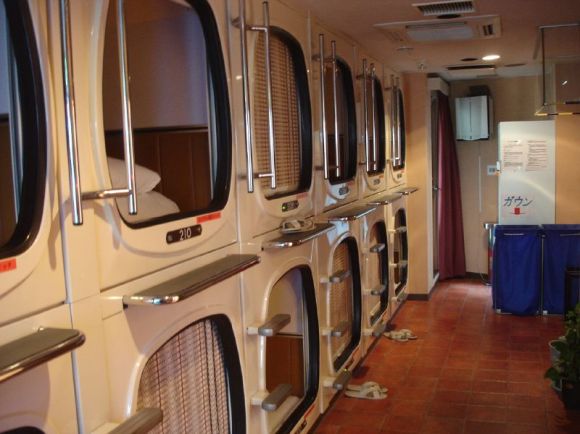
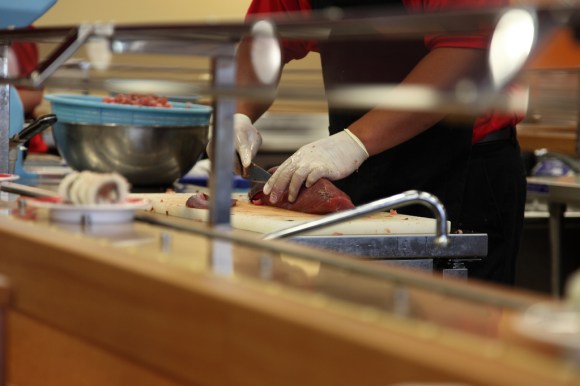
 Four things women are banned from doing in Japan【Women in Japan Series】
Four things women are banned from doing in Japan【Women in Japan Series】 Japan Sumo Association bans girls from prohibiting in practice event as controversy continues
Japan Sumo Association bans girls from prohibiting in practice event as controversy continues Nike commercial about gender inequality in Japan receives backlash online【Video】
Nike commercial about gender inequality in Japan receives backlash online【Video】 Nadeshico Sushi restaurant challenges gender roles with all-female staff clad in kimono
Nadeshico Sushi restaurant challenges gender roles with all-female staff clad in kimono 5 places in Japan to visit in 2015
5 places in Japan to visit in 2015 Two things to do, and two things not to do, when leaving a traditional Japanese inn
Two things to do, and two things not to do, when leaving a traditional Japanese inn Enjoy a Pokémon tea ceremony with new matcha goods featuring Poltchageist and Sinistcha
Enjoy a Pokémon tea ceremony with new matcha goods featuring Poltchageist and Sinistcha FUK COFFEE?!? Japanese cafe has a perfectly innocent reason for its startling-looking name
FUK COFFEE?!? Japanese cafe has a perfectly innocent reason for its startling-looking name Red light district sushi restaurant in Tokyo shows us just how wrong we were about it
Red light district sushi restaurant in Tokyo shows us just how wrong we were about it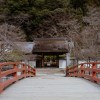 Ancient temple with National Treasures is a hidden gem on the Nara Yamato Four-Temple Pilgrimage
Ancient temple with National Treasures is a hidden gem on the Nara Yamato Four-Temple Pilgrimage Starbucks at Shibuya Scramble Crossing reopens, but is it really bigger and better than before?
Starbucks at Shibuya Scramble Crossing reopens, but is it really bigger and better than before? One of Japan’s oldest castles now lets travelers spend night on the grounds, drink in its keep
One of Japan’s oldest castles now lets travelers spend night on the grounds, drink in its keep Orange Juice Crisis ’24 – Japan’s OJ supplies drying up
Orange Juice Crisis ’24 – Japan’s OJ supplies drying up Studio Ghibli unveils new goods that tip the hat to The Cat Returns
Studio Ghibli unveils new goods that tip the hat to The Cat Returns McDonald’s Japan’s new pancake pie is a taste sensation
McDonald’s Japan’s new pancake pie is a taste sensation Foreigner’s request for help in Tokyo makes us sad for the state of society
Foreigner’s request for help in Tokyo makes us sad for the state of society Bad tourist manners at Mt Fuji Lawson photo spot prompts Japanese town to block view with screens
Bad tourist manners at Mt Fuji Lawson photo spot prompts Japanese town to block view with screens Japanese city loses residents’ personal data, which was on paper being transported on a windy day
Japanese city loses residents’ personal data, which was on paper being transported on a windy day Ghibli Park now selling “Grilled Frogs” from food cart in Valley of Witches
Ghibli Park now selling “Grilled Frogs” from food cart in Valley of Witches Studio Ghibli unveils massive T-shirt collection featuring top anime movie characters
Studio Ghibli unveils massive T-shirt collection featuring top anime movie characters McDonald’s new Happy Meals offer up cute and practical Sanrio lifestyle goods
McDonald’s new Happy Meals offer up cute and practical Sanrio lifestyle goods New definition of “Japanese whiskey” goes into effect to prevent fakes from fooling overseas buyers
New definition of “Japanese whiskey” goes into effect to prevent fakes from fooling overseas buyers Our Japanese reporter visits Costco in the U.S., finds super American and very Japanese things
Our Japanese reporter visits Costco in the U.S., finds super American and very Japanese things Japanese ramen restaurants under pressure from new yen banknotes
Japanese ramen restaurants under pressure from new yen banknotes All-you-can-drink Starbucks and amazing views part of Tokyo’s new 170 meter-high sky lounge
All-you-can-drink Starbucks and amazing views part of Tokyo’s new 170 meter-high sky lounge More foreign tourists than ever before in history visited Japan last month
More foreign tourists than ever before in history visited Japan last month New Pokémon cakes let you eat your way through Pikachu and all the Eevee evolutions
New Pokémon cakes let you eat your way through Pikachu and all the Eevee evolutions Disney princesses get official manga makeovers for Manga Princess Cafe opening in Tokyo
Disney princesses get official manga makeovers for Manga Princess Cafe opening in Tokyo Sales of Japan’s most convenient train ticket/shopping payment cards suspended indefinitely
Sales of Japan’s most convenient train ticket/shopping payment cards suspended indefinitely Sold-out Studio Ghibli desktop humidifiers are back so Totoro can help you through the dry season
Sold-out Studio Ghibli desktop humidifiers are back so Totoro can help you through the dry season Japanese government to make first change to romanization spelling rules since the 1950s
Japanese government to make first change to romanization spelling rules since the 1950s Ghibli founders Toshio Suzuki and Hayao Miyazaki contribute to Japanese whisky Totoro label design
Ghibli founders Toshio Suzuki and Hayao Miyazaki contribute to Japanese whisky Totoro label design Doraemon found buried at sea as scene from 1993 anime becomes real life【Photos】
Doraemon found buried at sea as scene from 1993 anime becomes real life【Photos】 Tokyo’s most famous Starbucks is closed
Tokyo’s most famous Starbucks is closed One Piece characters’ nationalities revealed, but fans have mixed opinions
One Piece characters’ nationalities revealed, but fans have mixed opinions We asked a Uniqlo employee what four things we should buy and their suggestions didn’t disappoint
We asked a Uniqlo employee what four things we should buy and their suggestions didn’t disappoint Female high school students continue to be banned on baseball field at Koshien Stadium in Japan
Female high school students continue to be banned on baseball field at Koshien Stadium in Japan Japan Sumo Association surprises fans with cutesy game on Twitter
Japan Sumo Association surprises fans with cutesy game on Twitter Sumo wrestlers stage group escape from dormitory over disagreements with master’s wife
Sumo wrestlers stage group escape from dormitory over disagreements with master’s wife Spending a night in Tokyo’s most beautiful capsule hotel【Photos】
Spending a night in Tokyo’s most beautiful capsule hotel【Photos】 Join the hordes of net users giggling at GIFs of sumo wrestlers performing comedic moves【Videos】
Join the hordes of net users giggling at GIFs of sumo wrestlers performing comedic moves【Videos】 Why aren’t there more female entrepreneurs in Japan? Pull up a chair… 【Women in Japan Series】
Why aren’t there more female entrepreneurs in Japan? Pull up a chair… 【Women in Japan Series】 Ever wanted a sumo sandwich? New baked goods line gets stamp of approval from wrestlers in Japan
Ever wanted a sumo sandwich? New baked goods line gets stamp of approval from wrestlers in Japan What the heck is this huge sumo wrestler doing at Ryogoku Station in Tokyo?
What the heck is this huge sumo wrestler doing at Ryogoku Station in Tokyo? Capsule hotel in Osaka offers VR, 100,000 volumes of manga, saunas, possibly a capsule
Capsule hotel in Osaka offers VR, 100,000 volumes of manga, saunas, possibly a capsule Sumo sprinting really ought to be the next evolution in track and field【Video】
Sumo sprinting really ought to be the next evolution in track and field【Video】 Sumo horse racing game returns with guest appearances from Street Fighter characters!
Sumo horse racing game returns with guest appearances from Street Fighter characters! Tokyo’s all-female sushi chef restaurant has closed down, is being dismantled
Tokyo’s all-female sushi chef restaurant has closed down, is being dismantled Oddly satisfying: watching sumo wrestlers in this hand-stamp assembly line 【Video】
Oddly satisfying: watching sumo wrestlers in this hand-stamp assembly line 【Video】 5 powerful reasons to be a woman in Japan 【Women in Japan Series】
5 powerful reasons to be a woman in Japan 【Women in Japan Series】
Leave a Reply